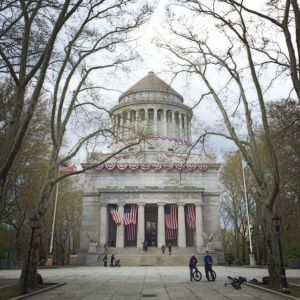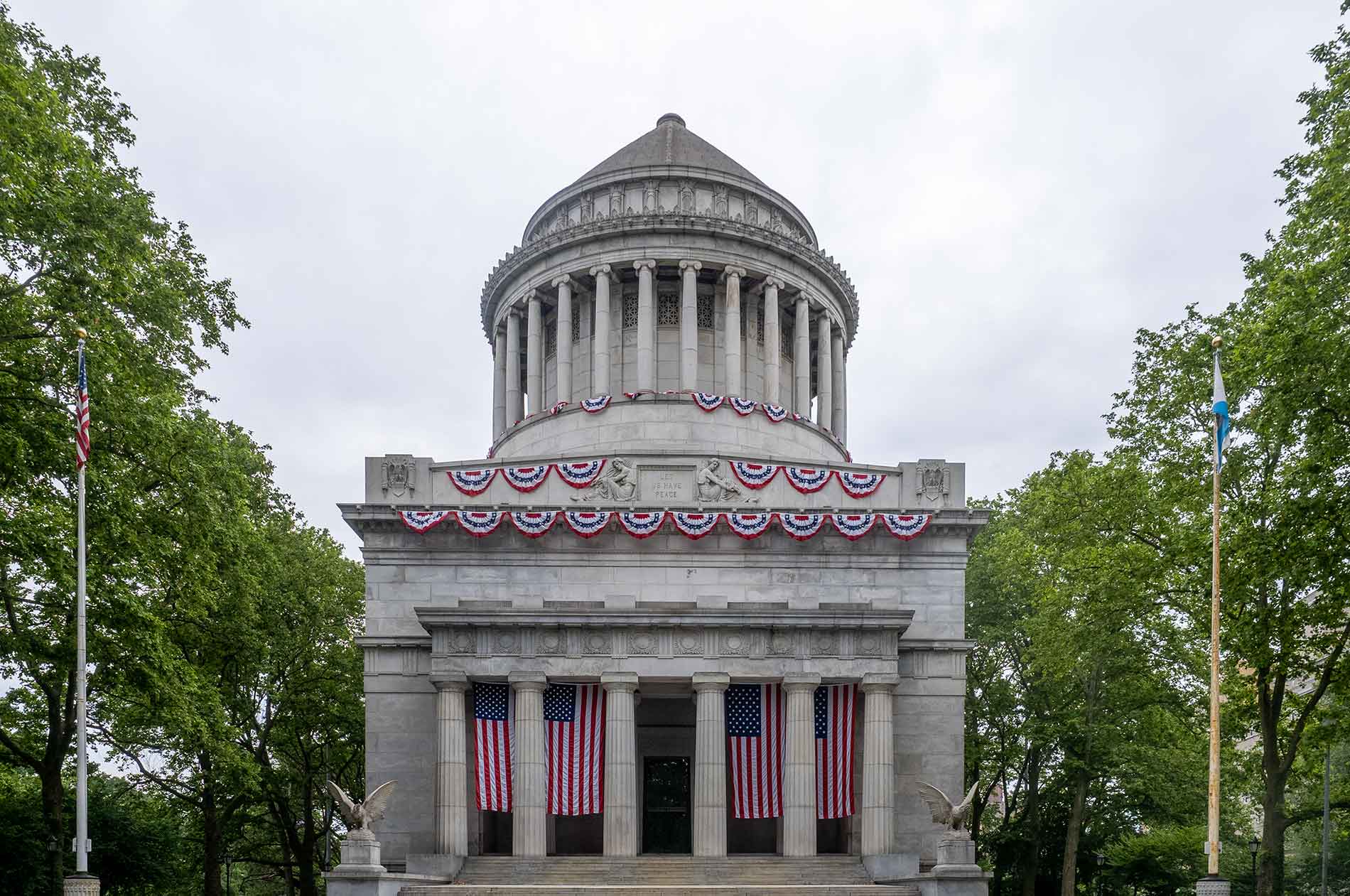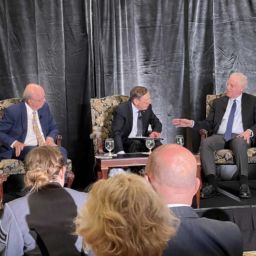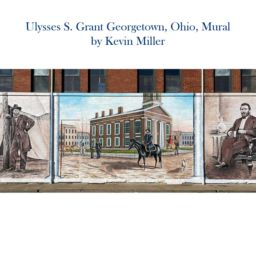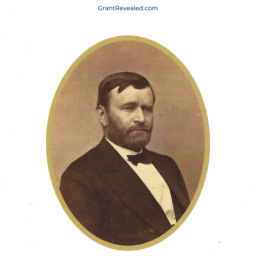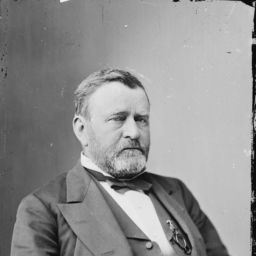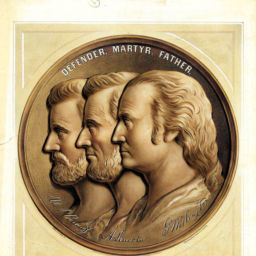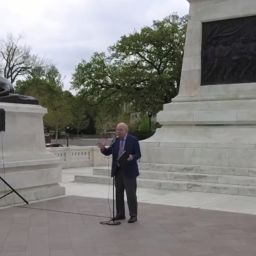

1. Relative to my first time seeing the Memorial versus subsequent visits, let me say that Grant's Tomb should be festooned with clean, well-maintained flags and bunting during as much of the year as is possible in light of staff and budget constraints. The flags and bunting add an appropriate burst of patriotic color, draw deserved attention to the Memorial, and bring to the scene literal dynamism, since the bunting and flags move in the breeze, that compliments the guardian eagles' spread wings and contrasts favorably with the structure's somewhat stern aesthetic.
2. Grant Monument Association, website, accessed April 14, 2022, https://grantstomb.org/burial-construction-early-history. Is it a coincidence that the popularity of the Tomb faded as the great crop of Confederate memorials were erected in the South, as the racist film *Birth of a Nation* premiered, and when whitewashing the secessionist cause and romanticizing Southern antebellum culture was the norm even in many academic quarters?
3. Though Grant said he'd otherwise choose to be buried at the U.S. Military Academy in West Point, New York, he rejected the idea since First Lady Julia Dent Grant would by regulations not be allowed to eternally rest beside him there. See: Letter to Julia Dent Grant, June 29, 1885, in John Y. Simon, "The Papers of Ulysses S. Grant, Volume 31: January 1, 1883-July 23, 1885" (2009), *Volumes of The Papers of Ulysses S. Grant*, 30 (Carbondale: Southern Illinois University Press), https://scholarsjunction.msstate.edu/usg-volumes/30.


